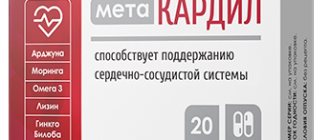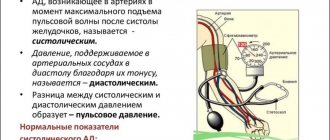What is low blood pressure anyway?
Blood pressure is the force with which blood pushes against the walls of the arteries. At the moment when the heart contracts, the pressure is highest - it is called upper, or systolic. In the interval between heartbeats, the pressure in the vessels drops - it is called lower, or diastolic.
Normal blood pressure ranges from 90/60 to 120/80 mmHg. The numbers 90 and 120 indicate systolic pressure, and 60 and 80 indicate diastolic pressure. If the readings are less than 90/60, the blood pressure is considered low. This condition is called hypotension.
Headaches with low blood pressure
Headaches with low blood pressure can vary in nature and intensity. They can increase quickly if pressure readings decrease sharply, or accompany the patient constantly. The following features are characteristic of pain due to hypotension:
- lack of precise localization - discomfort spreads to the entire surface of the head;
- additional symptoms: nausea and dizziness;
- chronic course, with alternating periods of relief and exacerbation.
If your blood pressure is constantly low and your head hurts, this indicator must be maintained with medication. With prolonged use, migraine may develop. This is an acute headache that does not go away even after normalization of blood pressure and significantly affects performance.
Is low blood pressure dangerous?
Many people - most often thin women - live with hypotension for years and feel great. Doctors believe that these people are lucky: they are less likely to suffer from cardiovascular diseases.
However, if your blood pressure suddenly drops below normal levels, unpleasant symptoms may appear:
- blurred vision;
- dizziness;
- fainting;
- nausea or vomiting;
- drowsiness;
- feeling of weakness.
As a rule, at a young age, the health risk is associated not with low blood pressure itself, but with the reasons due to which it falls. The exception is fainting. “This is the most alarming symptom, since it often leads to injuries and accidents,” says Oksana Dikur, general practitioner, cardiologist at the Rassvet clinic. “If hypotension is accompanied by loss of consciousness, you should definitely consult a doctor.”
But for older people, low blood pressure can be really dangerous. Moreover, a drop in diastolic pressure is more dangerous than a decrease in systolic pressure.
“This can lead to deterioration of blood supply to the kidneys and brain, increasing the risk of stroke and kidney failure,” explains Oksana Dikur.
Diagnosis of headaches due to hypotension
It is important to determine the exact reason why your blood pressure drops and your headache occurs. It is not difficult to measure this indicator, including at home. It is enough to use a tonometer and determine that the pressure has been reduced to 90/60 mm. rt. Art. and less. However, doctors at the Clinical Brain Institute recommend undergoing a full examination if hypotension occurs frequently and is accompanied by headaches. To determine the cause of this disease, additional techniques may be required:
- general and biochemical blood tests, as well as determination of the rate of blood clotting;
- Dopplerography - ultrasound of blood vessels with the addition of a contrast agent, informative for diagnosing blood flow in the neck and head;
- MRI of the cervical spine - allows you to determine osteochondrosis, intervertebral hernias and other pathologies that impair blood circulation;
- electrocardiography, ultrasound of the heart - prescribed for suspected heart failure and other diseases.
At the Clinical Brain Institute, you can undergo comprehensive diagnostics, which will help determine the cause of chronic hypotension. Our main advantages are the availability of precise and modern equipment, high qualifications and many years of experience of our specialists. After examination and diagnosis, the doctor will select a treatment regimen to relieve attacks of hypotension and reduce the manifestation of headaches.
What causes hypotension?
If you suddenly change your body position
Get up quickly or, for example, sit up sharply in bed. This is called orthostatic hypotension. When a person assumes a vertical position, blood, under the influence of gravity, rushes to the legs and abdominal area, and the pressure in the vessels drops. In order to raise blood from the legs and normalize blood pressure, the autonomic nervous system increases the heart rate and constricts blood vessels.
Healthy people do not experience discomfort, since this mechanism works very quickly. But in some cases, the autonomic nervous system fails. As a result, the pressure drops, the blood does not have time to rise from the legs, the brain lacks oxygen, and symptoms of hypotension appear. This happens, for example, in pregnant women, in people with certain diseases such as diabetes, and in every fifth elderly person.
Sometimes healthy people experience similar sensations, for example due to heat, and there is nothing to worry about. But if you feel dizzy every time you change position, you need to see a doctor.
If you eat
After eating, blood rushes to the gastrointestinal tract, and to prevent pressure from dropping too much, the autonomic nervous system constricts blood vessels and increases the heart rate. However, in about a third of older people it cannot cope with such a load. This condition is called postprandial hypotension. If this happens, you need the help of a doctor.
If you grow too fast
As you might guess, the problem most often occurs in children and adolescents: due to rapid growth, a malfunction occurs in the functioning of the autonomic nervous system. As a result, when you change your posture or bend over, symptoms such as dizziness and fainting appear. This is called nerve-mediated hypotension. Children usually outgrow the problem, and hypotension goes away on its own.
But sometimes neurally mediated hypotension is a sign of serious neurological diseases. In this case, the person needs the help of a doctor.
If you get sick
Blood pressure may drop in people who are dehydrated, those who have had shock, diabetics, and patients with arrhythmias and heart failure. In this situation, doctors seek to cure or control the disease that is causing hypotension.
If you take certain medications
Sometimes hypotension is a side effect of anti-anxiety medications, diuretics, painkillers, or blood pressure pills. In order to solve the problem, it is usually enough for the doctor to adjust the dose of the medication.
Hypotension - features of the disease
Arterial hypotension (hypotension) – a decrease in blood pressure by 20% or more. Normally this figure is 120∕80 mm. rt. Art., then hypotension is diagnosed when systolic pressure drops to 90, and diastolic pressure drops to 60 mm. rt. Art. The disease can be congenital or acquired, develop as an independent disease or accompany other pathologies.
Causes of hypotension
In most patients, hypotension develops with a decrease in vascular tone. Normally, their walls should expand and contract due to the muscle layer, in response to an increase or decrease in fluid in the bloodstream. However, with some diseases, muscles become weak and unable to adapt to changes. A decrease in circulating blood is normally accompanied by a narrowing of the lumen of blood vessels so that it flows with sufficient force to organs and tissues. With hypotension, a decrease in blood and a slowdown in its movement lead to insufficient blood supply to the head and limbs, and then to other organs.
Hypotension often occurs in a chronic form. During its course, there is an alternation of periods of long-term remission and exacerbation. Seizures can be triggered by the following factors:
- chronic heart failure;
- neuroses, stress, insomnia, lack of rest during intense work;
- history of traumatic brain injury;
- a sharp decrease in the total amount of blood in the vessels (burns, injuries, blood loss);
- physiological hypotension when the body adapts to being high in the mountains, as well as in athletes with well-trained heart muscle and a large volume of circulating blood.
With low blood pressure, headaches are the result of insufficient blood supply to the cells and tissues of the brain. Weakness of the vascular walls and other factors lead to permanent or temporary ischemia. This is a dangerous disorder in which nerve tissue lacks oxygen and nutrients. The result is headaches and other characteristic symptoms. In addition, prolonged cerebral ischemia is the main predisposing factor to the development of stroke.
Symptoms of low blood pressure
Acute or chronic hypotension is a dangerous disease in which organs and tissues are subject to ischemia. Symptoms are associated with these processes and therefore pose a danger to the body. They can be triggered by stress; they also often appear in stuffy rooms and with a lack of oxygen. A typical complex may include the following manifestations:
- general weakness, lethargy, fatigue;
- nausea and dizziness;
- headache;
- pallor of the skin and mucous membranes.
If your blood pressure drops sharply and you have a headache, you may faint. This often occurs in poorly ventilated areas at high air temperatures. Symptoms quickly appear and increase, the patient experiences tinnitus, deterioration of hearing and vision. It is important to provide first aid in a timely manner in case of an acute attack of hypotension.
Blood pressure norms depending on gender and age
Blood pressure is higher in adults than in children; it differs between men and women. In women, changes in blood pressure are affected by pregnancy and menopause.
Blood pressure norms for men and women
Age (years) Systolic blood pressure (mm Hg) Diastolic blood pressure (mm Hg) male wives husband. wives 10-20 123 116 76 72 20-30 126 129 79 75 30-40 129 127 81 80 40-50 135 137 83 84 50-60 142 144 85 85 60-70 145 159 82 85 70- 80 147 157 82 83 80 -90 145 150 78 79Often young people under 35 years of age do not notice symptoms of high blood pressure. However, they can also develop arterial hypertension, so periodic monitoring in case of existing risk factors and the appearance of complaints is mandatory for timely diagnosis, prevention and treatment if necessary.
In childhood, the walls of blood vessels are more elastic, so normal blood pressure in children is lower than in adults. The indicator increases as the child grows. The most significant change in blood pressure values is observed from birth to one year. Girls and boys have the same blood pressure, the difference appears towards the end of puberty.
Blood pressure norms in children
| Age | Systolic blood pressure (mm Hg) | Diastolic blood pressure (mm Hg) |
| newborns | 60-96 | 40-50 |
| from 2 months up to a year | 80-112 | 50-74 |
| 1-2 years | 82-115 | 61-75 |
| 2-3 years | 85-116 | 60-76 |
| 3-4 years | 90-118 | 60-78 |
| 4-5 l. | 95-120 | 60-80 |
| 5-6 l. | 100-122 | 60-80 |
| 6-8 l. | 110-122 | 70-82 |
| 8-11 l. | 110-126 | 70-82 |
| 12-15 l. | 110-136 | 70-86 |
| 15-16 l. | 110-136 | 70-90 |
| 16-18 l. | 110-120 | 80-90 |
How to properly monitor your health at different ages
Blood pressure is one of those indicators that all people need to monitor - both healthy and those suffering from diseases, young and mature.
Particular attention is paid to it:
- Suffering from various pathologies of the heart and blood vessels.
- Having a tendency to have high or low blood pressure due to hereditary factors.
- Persons over 45-50 years old.
- Suffering from diseases that provoke a risk of increased blood pressure (diabetes mellitus, kidney dysfunction).
- Having undergone surgical interventions on the heart, blood vessels and other important organs.
If for people who do not fall into any of these risk groups, control consists of a periodic scheduled examination in the doctor’s office (during medical examinations), then for these categories it is necessary to monitor it systematically - daily.
To do this, consult a doctor about the norm for your specific indicator, the specifics of the course of treatment to stabilize it, and when it is best for you to measure it. Afterwards, they begin to keep a data monitoring diary, where they record daily measurements.
Measures to stabilize the indicator
To bring your blood pressure back to normal and successfully prevent complications from the cardiovascular system, follow a few simple rules:
- Watch your diet - do not abuse excessively salty foods, foods with animal fats, or fried foods.
- Give up bad habits or reduce them to a reasonable minimum - smoking, alcohol, overeating.
- Try to perform simple sports exercises every day to keep your body in good shape.
- Follow your work and rest schedule, and always try to get enough sleep.
- Take walks in the fresh air every day - this perfectly helps invigorate the body and fills the blood with oxygen.
Before you engage in prevention or begin treatment of pathology, be sure to get advice from a doctor - exercise standards, diet and other factors are always individual, depending on the characteristics of a particular organism. Take care of yourself and remember: prevention is easier than cure!
Recommendations
If the cause of arterial hypertension is any concomitant disease, the necessary set of measures is selected, including the use of medications and surgical interventions (if necessary). Nutritional correction is required. You must also follow the recommendations described below.
Every day you should do twenty minutes of gymnastics; daily walking shows good results. You can use a contrast shower; after a shower, it is useful to rub the skin with a towel until redness appears (in the absence of hypertension). Specialists can prescribe general, lymphatic drainage, and hardware massage.
Drinking caffeinated drinks should not increase your blood pressure. The maximum is two cups of coffee or tea per day. If this concerns pregnant women, it is better to add milk to coffee without overusing the quantity and strength of the drink. The same recommendations apply to elderly patients. Nutrition should be balanced, rich in essential vitamins and minerals. To normalize vascular tone, you can use decoctions of ginseng, golden root or elecampane. A good night's sleep is also important.
What treatment will be required?
You can improve your well-being only by undergoing a course of treatment of the primary pathology that causes hypotension. Therapeutic measures are prescribed by a doctor: a cardiologist, endocrinologist or neurologist.
Typically, pharmaceutical drugs are used:
- Tonic blood vessels (aspirin, Citramon).
- Substitutes for natural hormonal substances (preparations based on thyroid hormones, etc.).
- Sedatives of natural origin (Corvalol, Valerian, Motherwort).
But this is not enough. It is necessary to adjust your lifestyle: stop smoking, alcohol, adhere to a strict regime of physical activity and rest.
It is important to normalize the diet: eat as many fortified foods as possible, as little fatty, fried, smoked foods as possible. It is necessary to optimize the consumption of table salt. It has hypertensive properties (increases blood pressure).
How to measure blood pressure correctly
A special device is used to measure blood pressure - a tonometer. Tonometers are manual (mechanical), semi-automatic and automatic.
Selecting a tonometer
The manual one consists of a shoulder cuff, an air pump (bulb), a stethoscope, and a pressure gauge. The semi-automatic tonometer contains a cuff, a bulb and an electronic unit. An automatic tonometer pumps air on its own and consists only of a cuff and an electronic unit.
It is difficult to measure pressure on your own with a manual tonometer; you will need the help of a person with the necessary skill. However, measurement with a manual tonometer is considered the most accurate. Most often it is used by doctors. Semi-automatic and automatic devices allow you to monitor blood pressure at home or at work without difficulty and outside assistance.
Rules for measuring blood pressure
To obtain the most accurate result, the following rules must be observed:
- the measurement should be carried out in a quiet environment, in a quiet room at room temperature;
- After eating, physical activity, smoking, at least 30 minutes must pass before the procedure;
- Do not drink tea or coffee before measurement;
- Blood pressure should be measured while sitting in a comfortable natural position, the hand should rest on a support approximately at the level of the heart, and be as relaxed as possible;
- During the measurement, you cannot keep your legs crossed, move or talk;
- Blood pressure should be measured on both arms with a break of 10-15 minutes;
- When taking antihypertensive drugs, 1-2 hours should pass before measuring blood pressure.
The results must be recorded in a special diary, noting the date, time of measurement, circumstances that may affect the result - poor sleep, malaise, taking medications.
How to identify possible pathologies?
Just stating the fact of the presence of hypotension says little. This is not informative. Establishing the etiology of the condition is required, and this is much more difficult.
Lowering blood pressure is an interdisciplinary problem that is dealt with by specialists in different fields. Consultations with a neurologist, cardiologist and endocrinologist are necessary.
In most cases, the pathology is polyetiological in nature and requires the help of several doctors at once.
At the initial appointment, complaints should be recorded, and having determined the symptoms, it is necessary to establish an anamnesis.
Important information is character and lifestyle, age, hormonal status, presence of diabetes, history of hypothyroidism, bad habits. Diet, nature of professional activity, etc.
After the initial measures, special research needs to be carried out:
- Determination of blood pressure using a conventional tonometer. They measure it on two hands; there should not be a big difference.
- Daily blood pressure measurement using an automatic tonometer. The so-called daily tonometry. Helps identify persistent hypotension and determine peak values over 24 hours.
- Electrocardiography. Makes it possible to assess the functional activity and consistency of the heart.
- Encephalography. To assess the functioning of brain structures.
- Tests for thyroid and pituitary hormones (TSH, T3, T4).
If necessary, other studies are prescribed. Everything is decided at the discretion of the treating specialist.
What to do when blood pressure drops sharply?
Pressure of 110 over 60 does not pose a danger to healthy people; as a rule, it passes without consequences or with a slight deterioration in well-being. Another thing is for hypertensive patients, in whom such values can cause a serious attack.
Help may be needed if you feel:
- general weakness;
- headache throbbing in the temples;
- nausea, urge to vomit;
- visual impairment;
- confusion;
- tachycardia.
In this case, the patient must be placed comfortably, legs raised so that there is blood flow to the head. Provide fresh air and peace. If you are confused, you should sniff ammonia or table vinegar. You can give a tablet of Citramon or another caffeine-containing drug. Offer a cup of hot tea with a slice of chocolate.
If the situation has not improved after 20 minutes, you should seek emergency help.
If the condition has stabilized, you should visit a supervising doctor as soon as possible. Perhaps the attack is triggered by taking hypertensive drugs, their dosage needs to be adjusted.
How often should you measure your blood pressure?
If a person associates poor health with high blood pressure, to confirm this fact it is necessary to measure it for several days in a row, repeatedly during the day at approximately the same hours - usually in the morning and evening, unless a different frequency of measurements is recommended by the doctor. It is recommended to take 2-3 measurements at a time with an interval of 2-3 minutes.
Daily blood pressure measurements are also recommended in other cases. These include:
- first identified fact of increased blood pressure;
- changing the treatment regimen for arterial hypertension (changing drugs or their dosage);
- increased blood pressure during antihypertensive therapy;
- cardiovascular diseases, in addition to arterial hypertension;
- taking medications for other diseases that may affect blood pressure levels.











